Green Horned Treehopper - Alosextius carinatus
Family Membracidae
This page contains pictures and information about Green Horned Treehoppers that we found in the Brisbane area, Queensland, Australia.

- Female body length 5mm
- The Green Horned Treehoppers are pale greenish-brown in colours. They have the pronotum extended and look like having two horns. As other treehopper, they rest on the young shots of their host plants, suck sap for their living.


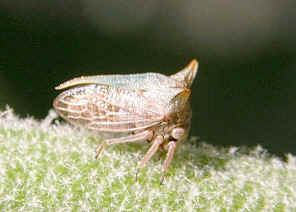
- Female
- Insects in the family Membracidae have the pronotum extending back over the abdomen between wings. Many species also have the pronotum extending forward so that the insects look like thorns on the host plant.
-



- Male
- Males are a little bit smaller in size, with flat and smaller horns than female.

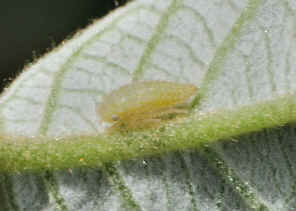
- Nymph
- Nymphs are pale green in colour. Adults and nymphs can be found on the same host plants. Adults usually rest openly on leaves while nymphs usually found hiding within dense young shots.
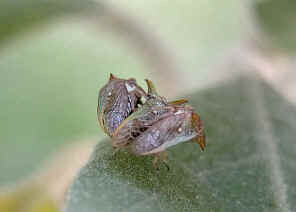

- The above pictures shows two males trying to mate with the female. Notice the males have the smaller and flatted horn.
- We did not see this treehopper attended by ants.
- In Ford Road Conservation Area, there are the spined plants (? Solanum sp.). We also found this Horned Treehoppers.


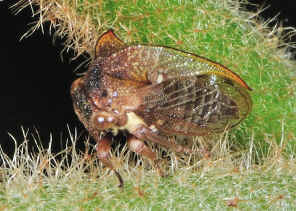

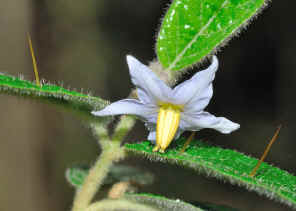


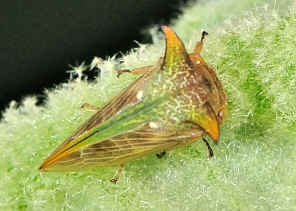
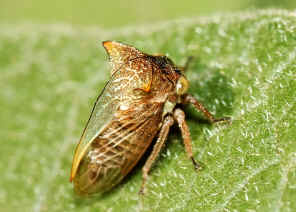
The Host Plant
- Wild Tobacco



- Solanum mauritianum, Family Solanaceae
- This is the host plants on which we found the Horned Treehoppers. There are many of them in Wishart Outlook along Bulimba Creek. This plant is considered as weed in Brisbane.

- The fully grown plant is a small tree about two meter height, hairy with large leaves. The flowers are purple in colour. The fruits are round and about 12mm in diameter, yellow-green in colour. The Fruit Flies and Green Potato Bugs can also be found on the fruits.
- Reference and link:
- 1. Alosextius carinatus - Fletcher, M.J. and Larivière, M.-C. (2001 and updates).
- 2. Alosextius carinatus - Australian Biological Resources Study, Department of the Environment and Heritage.
- 3. The leafhoppers and froghoppers of Australia and New Zealand (Homoptera: Cicadelloidea and Cercopoidea) - J W Evans, Australian Museum, 1966, p299, Fig.45H,I.
